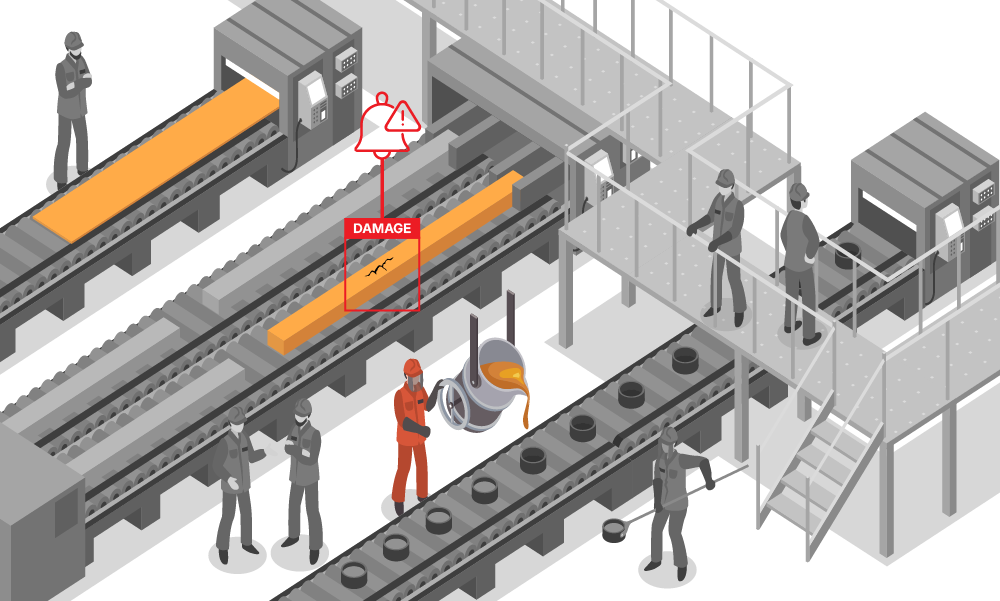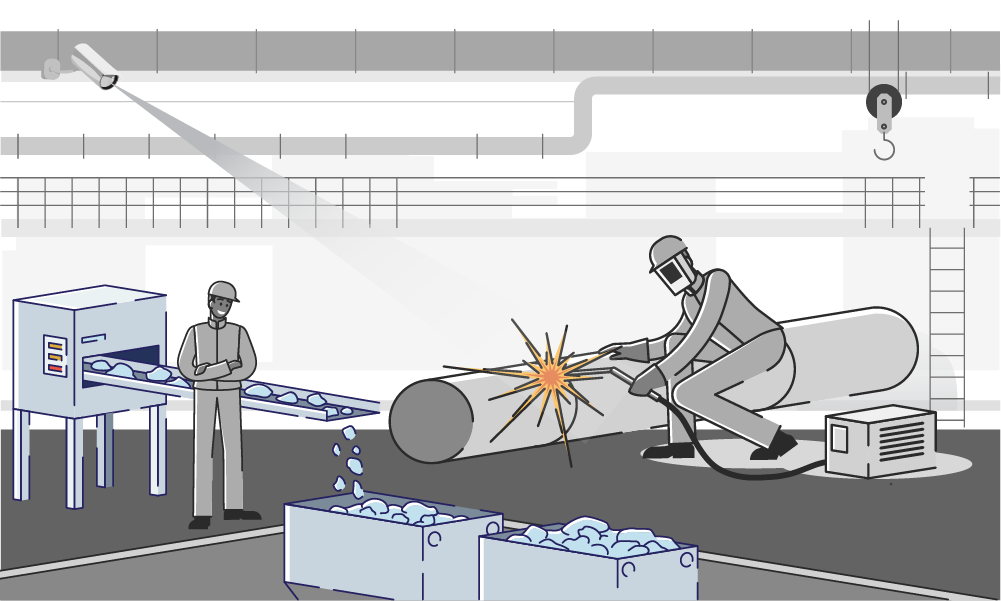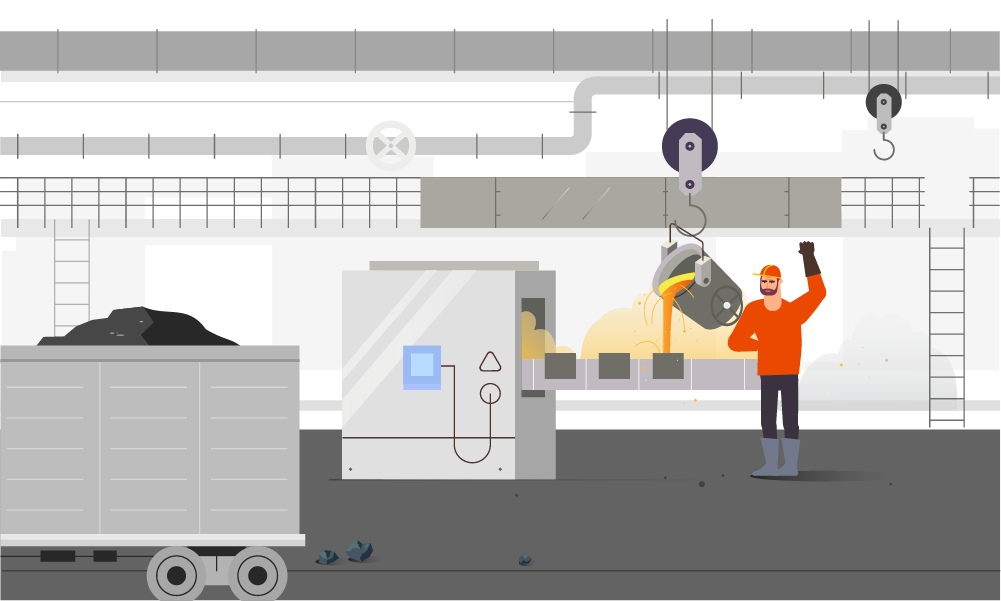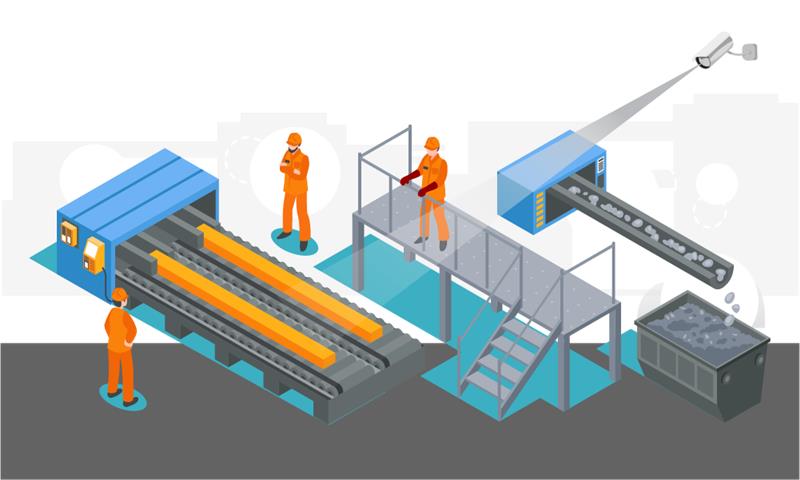Surface Defect Detection
Detect micro-defects, ensure quality, and reduce wastage with precision AI vision.


Surface Defect Detection powered by AI computer vision transforms quality control in the steel industry. It automatically scans hot and cold rolled surfaces to identify cracks, scale, pinholes, laminations, dents, or scratches in real time, well before they move further in the process.
Surface flaws like pinholes, cracks, or inclusions often go unnoticed during visual inspections, leading to high rejection rates later.
Human-led surface checks are inconsistent, prone to fatigue, and may vary across shifts or lighting conditions.
Defects are often caught too late, after finishing or packaging, wasting time, effort, and material.
Manual checks or re-inspections cause bottlenecks, slowing down continuous steel production.
Captures ultra-clear visuals of steel surfaces to detect even the smallest of irregularities in real time.
Deep learning models trained to identify, categorize, and prioritize various surface defects instantly.
Operators receive instant notifications with defect type, location, and severity, enabling fast action.
Easily deployable on existing production lines without disrupting the process or requiring infrastructure overhaul.


Before cameras are placed, our team works closely with your QA and production heads to identify key defect-prone zones in your process, from roughing to finishing stages.
Unlike container OCR or standard object detection, steel surfaces require adaptive camera calibration to handle hot metal glare, scale, and high-speed movement. We tune exposure, frame rate, and sensor placement accordingly.
Using your past defect data (images, logs), we build a steel-grade-specific model that understands localized terminology and defect variations, whether its centerline cracks or transverse marks.
The model is installed alongside your HMI or MES systems. We enable shift-level visibility, automatic tagging for rework, and live dashboards. Testing is done under real heat-load, ambient light, and line-speed conditions.
Stay updated with the trending and most impactful tech insights. Check out the expert analyses, real-world applications, and forward-thinking ideas that shape the future of AI Computer Vision and innovation.
Steel is required in construction, transport, and numerous other fields, whereas heavy machineries are required in fields like construction, mining, and many more activities; These two industries play a very crucial part for others as well, but both sectors come with their own challenges and concerns regarding safety, inefficiency, and high costs. Where AI vision […]

CEO & Co-founder
Some achievements do not arrive with loud announcements or dramatic celebrations. They arrive quietly, almost gently, carrying a kind of weight that only people close to the work fully understand. WebOccult’s Best Paper recognition at the IEEE was one such moment. Out of more than 450 research papers submitted from across the world, only five […]

CEO & Co-founder
People usually don’t think about logistics until there’s a delay in order delivery. On the other hand, there are millions of products that move across borders every single day, as their journey includes going through different ports, warehouses and distribution centres before the product reaches its respective owner. So there’s a lot that happens behind […]

CEO & Co-founder